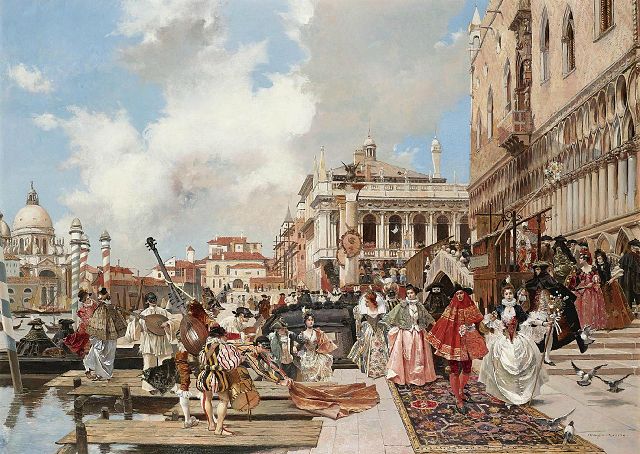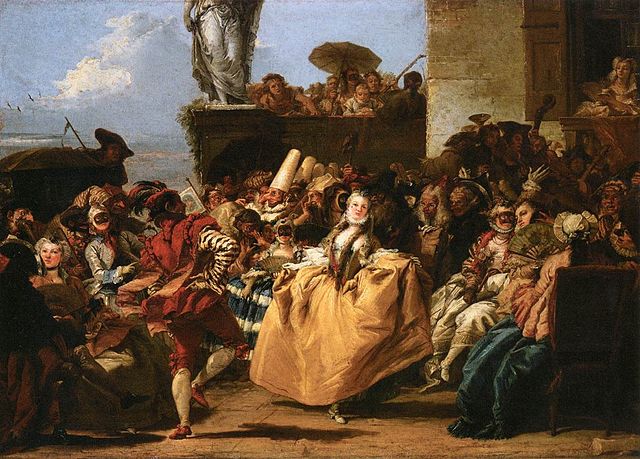
Thammasat University students who are interested in tourism, urban studies, political science, government, sociology, economics, and related subjects may find a newly available book useful.
Festivals and the City: The Contested Geographies of Urban Events is an Open Access book, available for free download at this link:
https://library.oapen.org/handle/20.500.12657/58064
The TU Library collection includes some books about different aspects of urban festivals.
The publisher’s description of Festivals and the City: The Contested Geographies of Urban Events follows:
This book explores how festivals and events affect urban places and public spaces, with a particular focus on their role in fostering inclusion. The ‘festivalisation’ of culture, politics and space in cities is often regarded as problematic, but this book examines the positive and negative ways that festivals affect cities by examining festive spaces as contested spaces. The book focuses on Western European cities, a particularly interesting context given the social and cultural pressures associated with high levels of in-migration and concerns over the commercialisation and privatisation of public spaces. The key themes of this book are the quest for more inclusive urban spaces and the contested geographies of festival spaces and places. Festivals are often used by municipal authorities to break down symbolic barriers that restrict who uses public spaces and what those spaces are used for. However, the rise of commercial festivals and ticketed events means that they are also responsible for imposing physical and financial obstacles that reduce the accessibility of city parks, streets and squares. Alongside addressing the contested effects of urban festivals on the character and inclusivity of public spaces, the book addresses more general themes including the role of festivals in culture-led regeneration. Several chapters analyse festivals and events as economic development tools, and the book also covers contested representations of festival cities and the ways related images and stories are used in place marketing. A range of cases from Western Europe are used to explore these issues, including chapters on some of the world’s most significant and contested festival cities: Venice, Edinburgh, London and Barcelona. The book covers a wide range of festivals, including those dedicated to music and the arts, but also events celebrating particular histories, identities and pastimes. A series of fascinating cases are discussed – from the Venice Biennale and Dublin Festival of History, to Rotterdam’s music festivals and craft beer festivals in Manchester. The diverse and innovative qualities of the book are also evident in the range of urban spaces covered: obvious examples of public spaces – such as parks, streets, squares and piazzas – are addressed, but the book includes chapters on enclosed public spaces (e.g., libraries) and urban blue spaces (waterways) too. This reflects the interpretation of public spaces as socio-material entities: they are produced informally through their use (including for festivals and events), as well as through their formal design and management.

The book begins:
Festivals are important features of contemporary cities that can be understood as celebrations or attractions, but also as agents of urban change. City festivals are associated with a range of intended and unintended outcomes for host places: from community building to commercialisation. Festivals can create visual spectacles, but also distinct soundscapes and atmospheres. They occupy urban spaces, but are also inherently linked to time, allowing for fascinating spatial and temporal analyses of their effects. As such festivals and festivalisation can help illuminate a range of issues relevant to urban studies and urban geography. Festivals have long been understood as distinct time-spaces, defined by their contrast to the everyday. However, it is increasingly clear that festivals are better understood as phenomena linked to the quotidian workings of the city: with urban districts redeveloped as festive places, and festivals appropriated as an urban strategy.
The key themes addressed by this book are the contested geographies of festival spaces and places and the role of festivals in the quest for more inclusive cities. Festivals and events are often used by municipal authorities to break down symbolic barriers that restrict who uses public spaces and what those spaces are used for. However, the rise of commercial festivals and ticketed events means that they are also responsible for imposing physical and financial obstacles that reduce the accessibility of city parks, streets and squares. Even free festivals can be exclusive, with atmospheres and pressures to consume deterring some groups. Festival sites provide good examples of how urban spaces are de- and re-territorialised and tend to be highly contested. Alongside addressing the contested effects of urban festivals on the character and inclusivity of public spaces, the book addresses more general themes including the role of festivals in culture-led regeneration. Several chapters analyse festivals and events as economic development tools, and the book also covers contested representations of festival cities and the ways related images and stories are used in place marketing.
The use and management of urban places and public spaces varies in different parts of the world, and this book focuses deliberately on Western European cities. This is a particularly interesting context given the socio-cultural issues associated with high levels of in-migration and concerns over the commercialisation and privatisation of public spaces. Festivals and events are linked to these issues in complex ways – they can contribute to urban commercialisation, but are also commonly used as policy responses to achieve more inclusive cities. The geographical focus of the book also means we can assess whether positive accounts of festivals and festivalisation in North American cities…reflect experiences in Western Europe.
A range of cases from across Western Europe are used to explore these issues, including chapters on some of Europe’s most significant and contested festival cities: Venice, Edinburgh, London and Barcelona. The book also covers a wide range of festivals including those dedicated to music and the arts, but also events celebrating particular histories, identities and pastimes. Chapters address multiple festival genres: from the Venice Biennale and Dublin Festival of History to music festivals in Rotterdam and craft beer festivals in Manchester. Festivals are central to various international schemes such as the European Capitals of Culture programme, but also the UNESCO Creative Cities initiative which nominates cities of literature, film and music. Several of the cases featured in this book have been awarded one of these titles.
The diverse and innovative qualities of the book are also enhanced by the range of urban spaces covered: obvious examples of public spaces are addressed such as parks, streets, squares and piazzas, but the book includes chapters on indoor public spaces (e.g. city libraries) and blue spaces (canals) too. This reflects our interpretation of public spaces as socio-material entities: they are produced informally through their use – including for festivals and events – as well as through their formal designation, design and management.

(All images courtesy of Wikimedia Commons)
